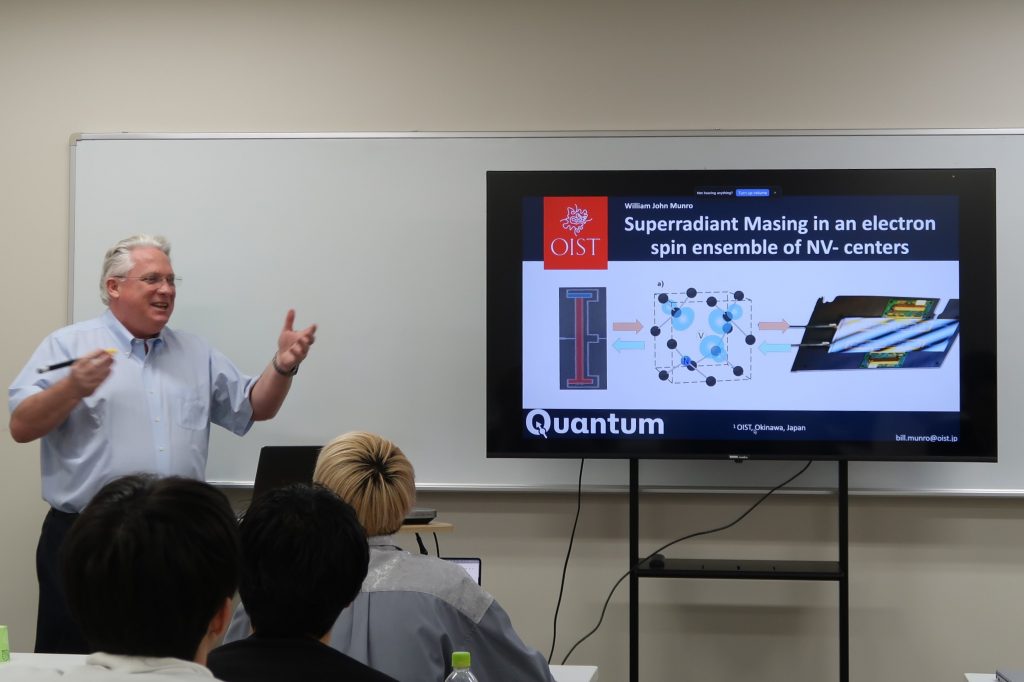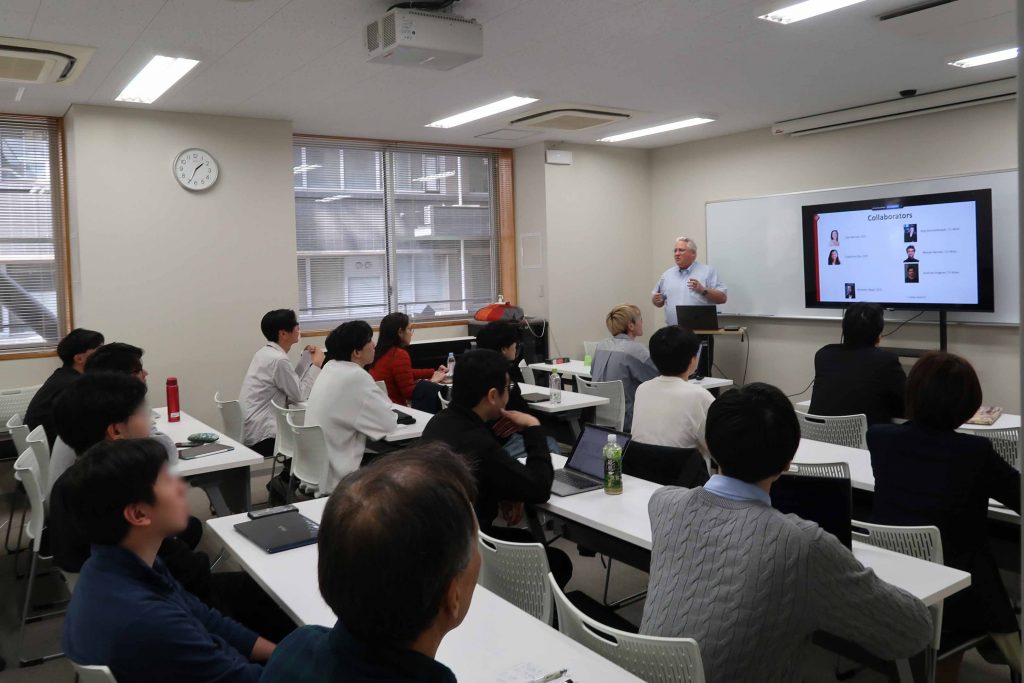[Event Report]The 10th Quantum Solid Flagship Seminar
On April 8, 2025, the 10th Quantum Solid Flagship Seminar was held, inviting Professor Bill Munro from the Okinawa Institute of Science and Technology (OIST). Professor Munro presented 15 years of research findings on hybrid systems in the field of quantum technology, particularly the combination of superconducting qubits and NV centers.
First, he highlighted the motivation for researching hybrid systems, which is to achieve advanced functionalities and long-distance quantum communication, unachievable with a single quantum system. While superconducting qubits excel in the microwave domain, they face challenges in interfacing with light and long-distance transmission. On the other hand, NV centers exhibit excellent properties in both the microwave and optical domains, making them promising as interfaces between the two.
During the lecture, Professor Munro explained the tunable flux qubit and NV center combination, developed in collaboration with NTT. In early experiments, strong coupling between the two systems was confirmed. However, coherence times (T1 and T2) were short, and generating entanglement was challenging. These issues were attributed to the inhomogeneous broadening of NV centers.
To address this problem, a technique called spectral hole burning was introduced. This significantly improved the coherence time of NV centers and enabled the generation of microwave frequency combs.
Furthermore, nonlinear effects in hybrid systems, particularly amplitude bistability and superradiance, were discussed. By applying a strong microwave field, classical amplitude bistability was observed, demonstrating that ensemble NV centers are suitable for observing nonlinear phenomena.
Additionally, observations of superradiance in ensemble NV centers were presented. Superradiance is a phenomenon where NV centers in an ensemble simultaneously transition from an excited state to a ground state, serving as evidence of quantum coherence. In the experiments, signals of superradiance were observed using microwave cavities and optical fibers.
Professor Munro expressed expectations that these research findings would contribute to the development of quantum computers and quantum sensors. He also shared aspirations to explore new areas of quantum physics through research on hybrid systems.
The seminar attracted nearly 80 participants, including online and in-person attendees, with significant representation from industry through the Solid Quantum Sensor Research Group. Active Q&A sessions were held, and we extend our gratitude to Professor Munro and all participants for their contributions.


